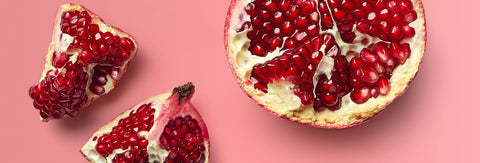By now most of us know that too much sun exposure is bad news. Aside from the red, blotchy skin and soreness that go hand-in-hand with a painful burn, sun damage has also been linked to premature aging, sunspots, and cancer.
That’s why it’s important to always stay protected from the sun, whether it’s sunny or cloudy, by wearing sunscreen with a broad-spectrum SPF of at least 30 to help protect the skin’s epidermal layers. While melanin (a pigment in the skin) works to protect the body from UV rays and sunburn, prolonged exposure of even 15 minutes can cause a burn and allow UV rays to penetrate your skin’s deeper layers, where they wreak havoc on your cells.
It isn’t always immediately obvious when you’ve had too much sun either. Following exposure, skin can turn red in half an hour, but for most people, a burn presents itself anywhere from two to six hours later. Expect pain to show up at the six-hour mark, and blistering or peeling to begin two days later as the body generates new skin cells to try and replace the damaged ones.
Fancy a tan? Golden skin may be a goal for some, but it’s important to remember that tanned skin is the body’s way of fighting back against sun damage—it’s a clear sign that your skin has already been overexposed. That’s why it’s recommended to limit sun exposure between 11 a.m. and 3 p.m. (when UV rays are at their strongest), wear protective clothing along with a wide-brimmed hat and sunglasses, and apply sunscreen at least 20 minutes before heading outside. Don’t forget to reapply every two to three hours.
Of course, everyone makes mistakes, and the sun damage as a result of sunburn is irreversible. But if you spent a bit too much time unprotected in the sun and find yourself with a burn, here are seven natural remedies that may help to soothe and minimize symptoms.
Oatmeal
There’s a reason so many soothing skin care lines include oatmeal—oats help to decrease inflammation and moisturize the skin while reducing overall itching. Draw a cool bath and add a cup of pulverized or finely ground oats to help minimize the pain from your sunburn, soak for 20 minutes, and then gently dry off with a soft towel.
Witch hazel
Dabbing witch hazel with a cotton ball or with a wet cloth onto sunburned areas of your skin can help to reduce pain and itching thanks to the astringent’s anti-inflammatory properties. Note that witch hazel is for external use only—you don’t want to swallow any of this.
Cow’s milk
Milk contains vitamins A and D, antioxidants that help to heal the skin. Meanwhile, milk’s lactic acid can help to gently exfoliate some of those dead skin cells, speeding up the rejuvenation process. To create a protective layer around sunburned skin, gently apply milk with a soft washcloth.
Aloe vera
The sunburn antidote that’s most available in a commercial bottle, aloe vera is sometimes touted as the “burn plant.” It works to moisturize skin and heal any damaged areas, and is best used as a topical treatment straight from the plant. If you don’t happen to have access to the plant, look for a 100 percent aloe vera gel, and keep it in the fridge for cooling relief.
Honey
Experts buzz about the healing properties of raw honey, which many say can reduce inflammation, help to clear infections, and give burnt skin some much-needed moisture. Spread a thin layer of the sticky stuff onto damaged skin for additional relief, and then cover it with a light layer of gauze so that sticky skin can still breathe.
Carrots
Studies have shown that consuming beta-carotene may help the body to heal faster following a sunburn. That’s because beta-carotene converts to vitamin A (an antioxidant), which can help promote healing. It’s important to note that a diet steady in beta-carotene-rich foods, like carrots, before and after sun exposure is recommended; these studies followed subjects over a minimum 10-week period.
Pomegranates
Not only are ruby pomegranate seeds delicious and fun to eat, but they’re a good source of ellagic acid, a micronutrient that promotes healing through its antioxidant properties. Some studies have found that a diet that includes pomegranates may help to add some additional protection against DNA damage from sun exposure, adding to the list of reasons to add the fruit to your cart.
At the end of the day, the easiest way to prevent a sunburn is to take precautionary steps to minimize sun damage through the four S’s of sun safety (shade, style, sunscreen, and getting vitamin D through safer sources like supplements). But in the instance you find yourself with a severe burn with blistering, or your sunburn has also resulted in a fever, chills, pain, confusion, or nausea, be sure to seek out medical attention immediately.




